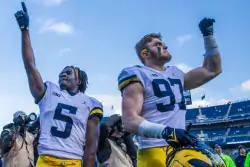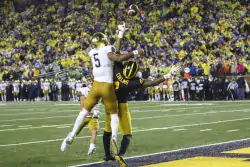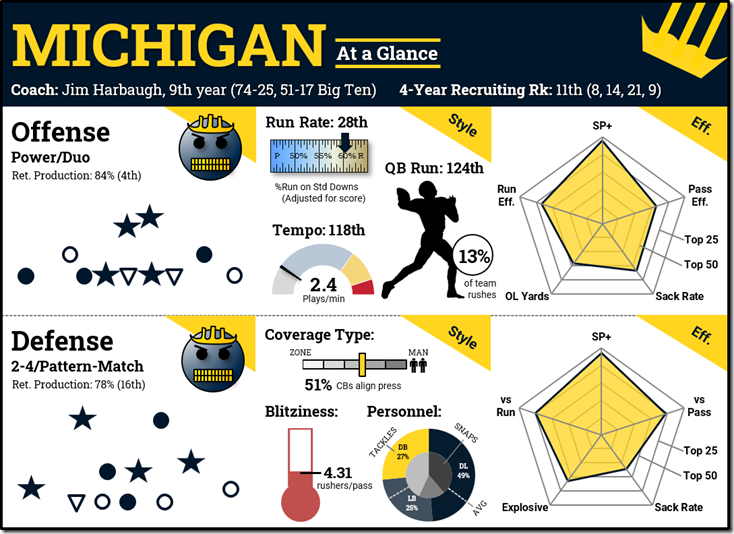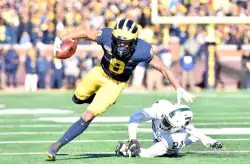I did this with the defense previously, and finally got around to the offense. Bear with me, Excel Geniuses, as I struggle to make the vlookup to index(match) transition. A lot of the lessons were discussed so often in the UFRs that it's not worth going over them again. Split Zone was their base running play, and they struggled all season to find appropriate counters for what defenses prepared against it because the natural counter for it—QB keeper on zone read—was not something they could get/were coaching(?) McNamara to do. The officiating got me all house-stompy again. Hassan Haskins was a steely-eyed missile man. Anyway this exercise is about finding things that were new.
Favorite Plays?
They were a Power and West Coast sorta team, which is to say, pretty Harbaugh.
| Type of Play |
Plays |
YPP |
EPA/P |
EPA(T) |
| Power Run |
255 |
5.3 |
+0.2 |
+55 |
| Pass Short |
219 |
5.9 |
+0.2 |
+41 |
| Inside Zone |
163 |
5.1 |
+0.2 |
+26 |
| Pass Deep+Sack |
114 |
10.8 |
+0.5 |
+59 |
| Screen/RSO |
33 |
4.3 |
-0.2 |
-6 |
| Speed to the edge |
33 |
9.8 |
+0.5 |
+16 |
| Play-Action |
31 |
7.2 |
+0.3 |
+9 |
| Outside Zone |
28 |
7.7 |
+0.3 |
+8 |
| QB Run/Keeper |
17 |
7.0 |
+0.4 |
+6 |
| Scramble |
12 |
8.8 |
+0.4 |
+5 |
| Trick Play |
10 |
20.4 |
+1.6 |
+16 |
| Total |
915 |
6.6 |
+0.3 |
+236 |
From the above alone you might say they probably didn't go to their counters enough. Later in the season they started taking more shots downfield at Roman Wilson, who rewarded them for it. Their RB and TE deep routes were also astonishingly effective for how little they were deployed. Even adding all the sacks, dropback passing was one of the most effective tools in their bag. Play-action wasn't used very often—Gattis seemed to prefer working RPOs into the short passing game rather than just fake something.
They were evenly split between power and zone running earlier in the season but leaned on power more as it went on, and mostly ran off their tight ends regardless of what the offensive line was doing. That wasn't a bad plan.
I tried to identify individual heroes but the OL winning their battles varied game by game. Haskins was the constant, rarely getting less than half a point on any carry, and often hurdling fools downfield.
All told the breakdown was 50% called runs (for 5.65 YPC, +0.2 EPA/play), 37% called passes (7.94 YPA, +0.3 EPA/play), and then 6% play-action, 6% run-pass options, and 2% screens.
[After THE JUMP: You won't believe which player was super duper clutch on passing downs, except you will because you read the UFRs.]














28